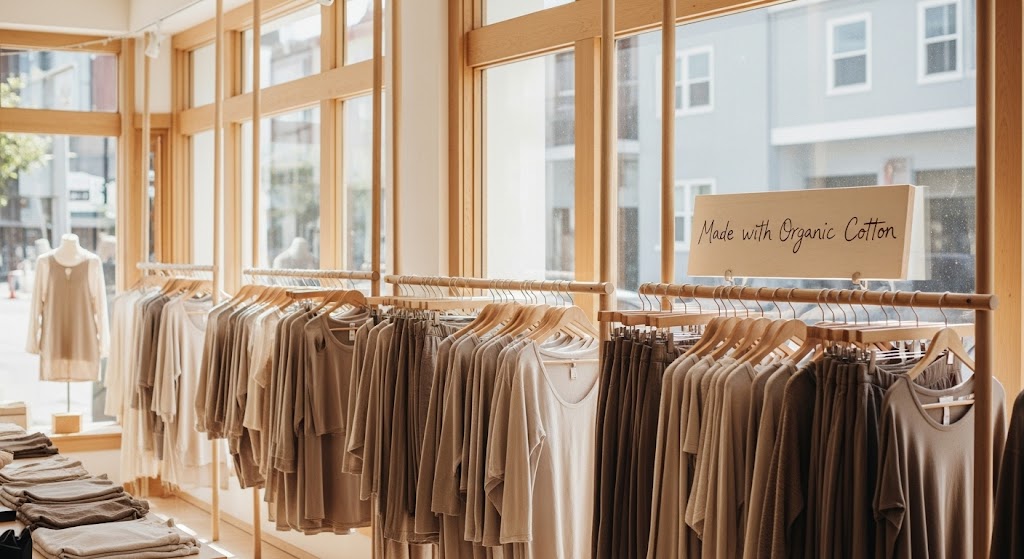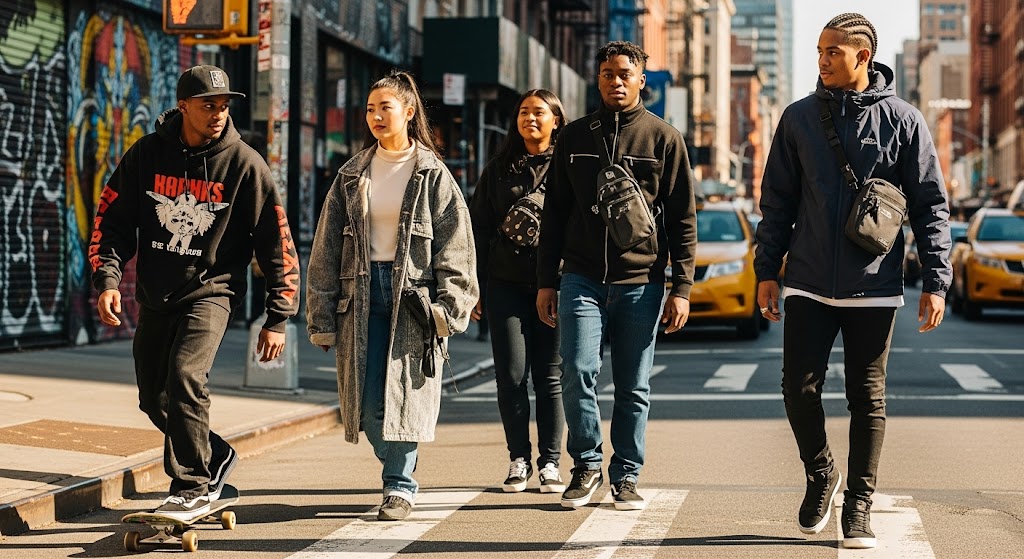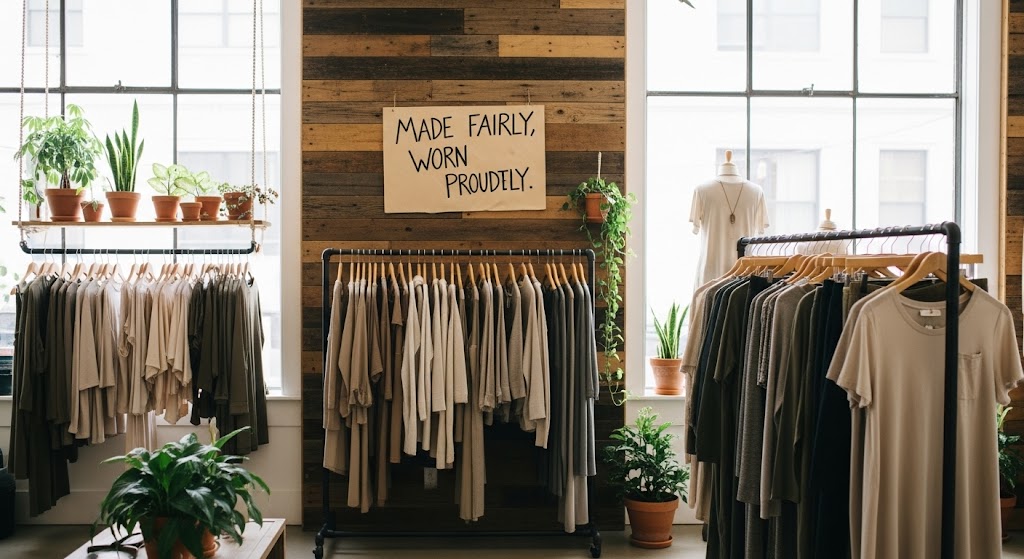No products in the cart.: $0.00
The Rise of Sustainable Fashion in the U.S.

As the fashion industry reckons with its environmental footprint and social impact, the United States has become a global voice in the movement toward sustainable fashion. While fast fashion continues to flood malls and feeds, a counter-revolution has quietly gained strength—fueled by innovation, transparency, and a deep cultural shift among American consumers.
Over the past decade, American designers, brands, and shoppers have increasingly embraced ethical production, eco-conscious materials, and mindful consumption. This evolution signals not just a new fashion trend, but a transformation in how Americans relate to clothing—and to the planet.
A Cultural Shift Rooted in Responsibility
Sustainable fashion in the U.S. has grown from a niche concern into a national conversation. Much of this shift stems from awareness. Documentaries like The True Cost (2015) exposed the environmental and human toll of the global apparel industry, galvanizing young consumers into action. Words like “carbon footprint,” “deadstock,” “greenwashing,” and “slow fashion” entered everyday vocabulary.
In urban centers such as Portland, San Francisco, Austin, and Seattle, sustainable living has become more than a lifestyle—it’s a shared ethos. Farmers’ markets, zero-waste stores, and thrift boutiques often sit side by side. Here, clothing brands are expected to disclose their sourcing practices, water usage, labor conditions, and packaging choices.
Leading sustainable fashion brands in the U.S. include:
- Reformation: Celebrated for its transparency and romantic yet minimal aesthetic, Reformation uses deadstock fabrics, carbon-neutral production, and tracks its environmental savings on every item.
- Everlane: Known for its “radical transparency,” Everlane reveals the true cost of its garments, from labor to transport.
- Pact: A brand built around organic cotton and fair trade certification, proving basics don’t have to come at an ethical cost.
- Christy Dawn: Based in LA, this label designs feminine dresses made from surplus fabric, embracing the “nothing wasted” mindset.
These brands have shown that eco-consciousness and profitability can go hand-in-hand—paving the way for larger corporations to adopt sustainability models of their own.
The Role of Gen Z and Millennials
The backbone of America’s sustainable fashion movement is the consumer generation born between the 1980s and early 2000s. Gen Z and Millennials—raised during a climate crisis, economic upheavals, and the age of digital activism—are no longer passive shoppers. They are skeptical, informed, and vocal.
These generations want to know:
- Who made my clothes?
- Were they paid fairly?
- What chemicals were used in the dye?
- How long will this last?
Social platforms like Instagram, TikTok, and YouTube have empowered them to amplify their concerns. Review videos, brand transparency call-outs, and ethical styling tutorials are reshaping how fashion is consumed and shared. Apps such as Good On You allow users to look up a brand’s ethics rating in seconds, providing accessible accountability.
For younger Americans, fashion is no longer only about aesthetic—it’s about values. Wearing sustainable clothing isn’t just stylish; it’s a public statement of care and consciousness.
The Thrift Revolution and Circular Economy
One of the most visible expressions of sustainable fashion in the U.S. is the explosion of thrifting and secondhand fashion. What was once stigmatized as “cheap” is now celebrated as “vintage” and “eco-chic.”
Online platforms like:
- Depop (popular with Gen Z for curated secondhand fashion),
- Poshmark (for peer-to-peer selling), and
- ThredUp (one of the world’s largest online thrift stores)
have created entire economies around recirculating garments. These marketplaces offer a low-barrier entry into sustainable shopping—and often encourage creativity and personalization.
Additionally, brick-and-mortar thrift shops, consignment stores, and curated vintage boutiques are booming. They’ve become destinations for finding unique, affordable, and often designer pieces, all while keeping clothes out of landfills.
This circular fashion economy has even influenced luxury and fast fashion. Brands like Levi’s and Patagonia now offer buy-back programs and in-store repairs, acknowledging that sustainability isn’t optional anymore—it’s essential.
Slow Fashion and the Craft Renaissance
As Americans become more critical of mass production, many are rediscovering the beauty of handmade, local, and timeless fashion. The slow fashion movement advocates for:
- Fewer but better-quality clothes
- Supporting artisan and local makers
- Extending garment life through care, repair, and thoughtful purchasing
This shift has revived skills like sewing, knitting, natural dyeing, and upcycling. On TikTok and YouTube, DIY fashion has become wildly popular—with creators transforming thrifted pieces into runway-worthy designs using only scissors, thread, and imagination.
This renaissance of craftsmanship marks a return to intentionality. Clothing is no longer disposable—it’s personal. It carries memories, marks time, and reflects personality.
Technology Meets Sustainability
The rise of fashion tech has also helped the sustainable fashion industry flourish in the U.S. Innovations include:
- Digital fashion sampling to reduce waste in prototyping
- Blockchain for supply chain transparency
- 3D body scanning for better-fitting garments that reduce returns
- Biodegradable and lab-grown materials, such as mycelium leather or recycled polyester from ocean plastic
Brands are increasingly using AI and data science to manage inventory, reduce overproduction, and forecast consumer demand more accurately—cutting back on unsold stock and unnecessary markdowns.
Sustainability isn’t just about fabrics anymore—it’s about entire systems.
Fashion Meets Social Justice
Sustainable fashion in the U.S. has become deeply intertwined with racial justice, labor rights, and gender equity. Ethical fashion advocates are increasingly asking: who benefits from fashion? Who is left out? Who gets exploited?
Many American designers are using their platforms to:
- Highlight Black-owned, Indigenous-owned, and Latinx-owned fashion labels
- Advocate for size inclusivity
- Push for fair labor practices across domestic and overseas factories
Initiatives like #PayUp (which pressured major brands to pay garment workers during the pandemic) show that the U.S. sustainable fashion movement is also about human rights. True sustainability cannot exist without equity.
The Future: From Niche to Norm
The future of American fashion lies in balance. A balance between technology and tradition, individualism and community, profit and purpose.
Young entrepreneurs are building brands around transparency from day one, while established corporations are being held accountable like never before. From capsule wardrobes and digital fashion rentals to regenerative agriculture and zero-waste pattern cutting, the fashion revolution is happening now—and the U.S. is at the heart of it.
Sustainability is no longer niche. It’s becoming the new norm.


